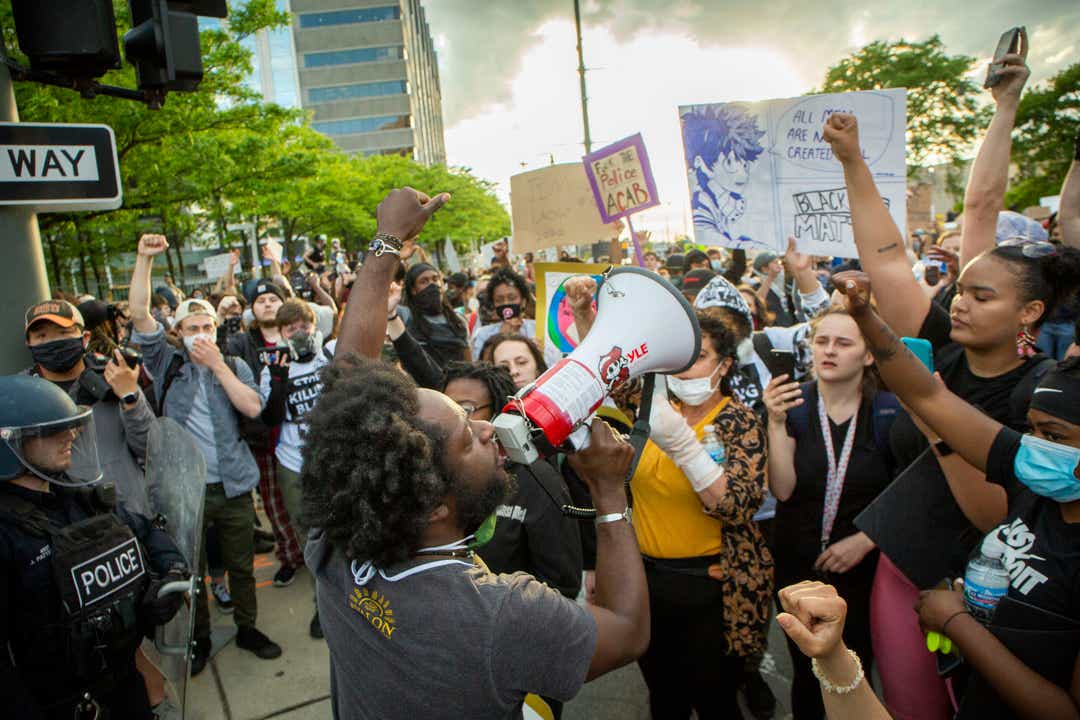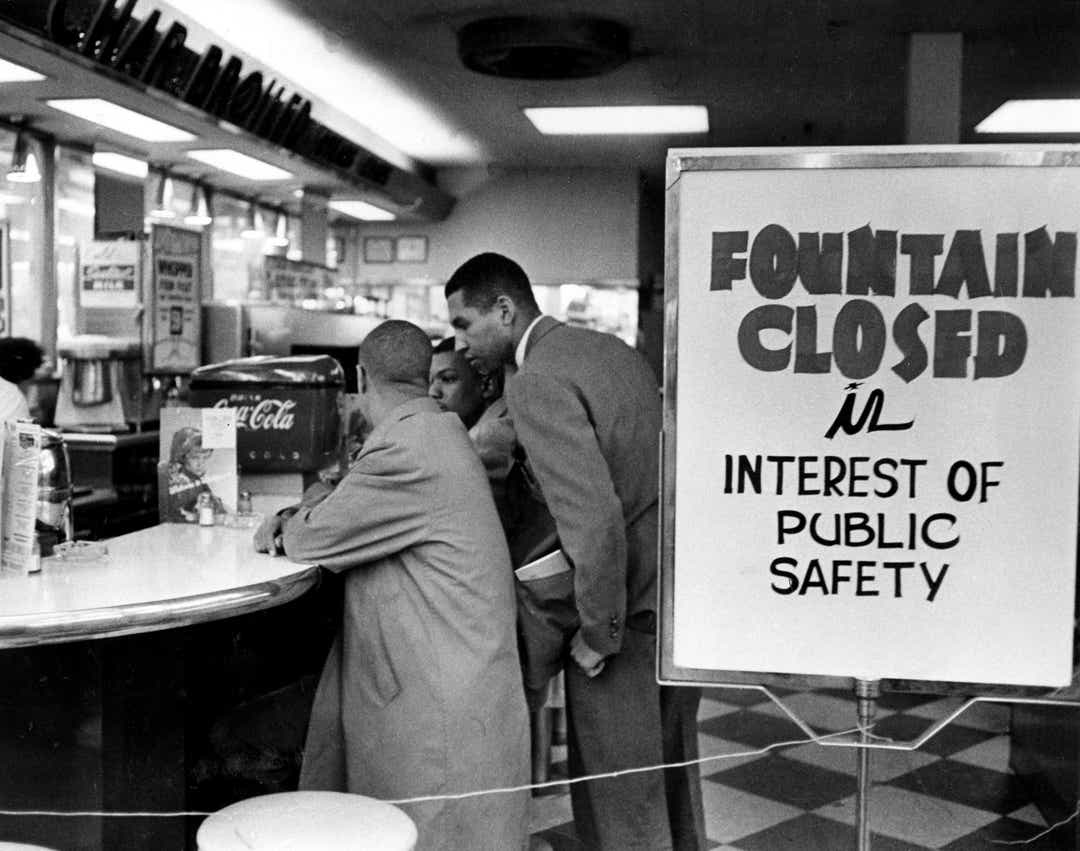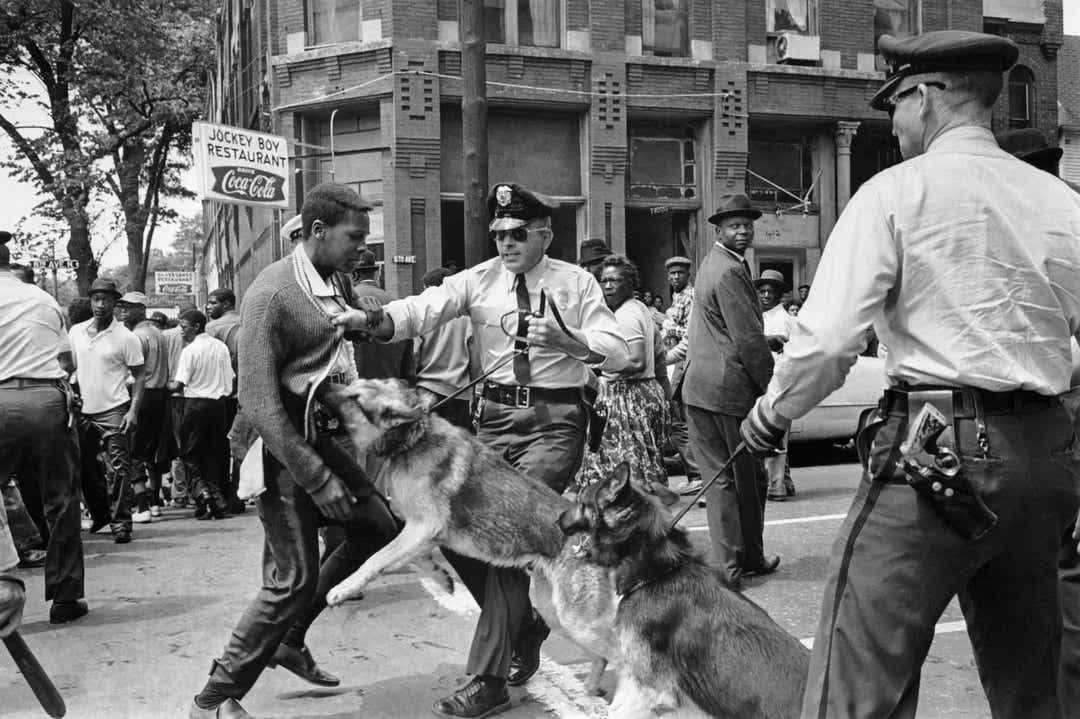SAN FRANCISCO — Shahid Buttar, a Black Lives Matter activist running for Congress against fellow Democrat and House Speaker Nancy Pelosi, has been protesting in the streets for 20 years.
He knows the cost of civil dissent can be high. Protesters can be injured or killed — as evidenced by sometimes violent confrontations between demonstrators and police in the ongoing national protests over the death of George Floyd, who died after a Minneapolis police officer kneeled on his neck for roughly nine minutes on Memorial Day.
But Buttar is confident the time-honored tactic will once again spur societal change.
"This won't be a fast struggle," he says. "But we need to stay active and mobilize."
The United States has a long, storied history of protests and uprisings, starting with the Boston Tea Party's rebellion against British rule. Fast forward two centuries later, public pressure is once again being brought to bear on a society that remains vexed by institutional racism born out of the nation's slave-owning roots.
When citizens clash with government forces, the effect is powerful, tugging at emotions and stealing headlines. But their power is not episodic but cumulative, historians say, with the most successful civil rights demonstrations creating change through incremental steps, building on one another to, at times, remake the U.S. political landscape.

“Protest is the highest form of patriotism, it’s a way to say to our government, ‘Hey, we are here!’” says Aaron Bryant, curator at the National Museum of African American History and Culture in Washington, D.C. “Protests draw attention to needs, and then ideally other people become part of the movement, in boardrooms or museums or newspapers, and the dialog goes to another level.”
The lesson for today's activists, experts say, is that protests should be seen as one tool in a box that must also include sustained grassroots organizing, meaningful change at the ballot box and shifts in cultural norms.
One need only look at the long road from overt Jim Crow discrimination to a more veiled racism that persists in American society today to see the struggle that’s required to achieve lasting change, says Harold McDougall, a professor at Howard University Law School in Washington, D.C.
“The first level of action is people in the streets saying we can’t take it anymore, but we also need the help of those trained to fight within the system,” says McDougall, who is at work on a book called “Democracy at a Human Scale.” “More than anything, if you’re going to move the dial, you have to keep at it.”
Civil rights gains often led to stalls
The civil rights movement protests that flared in the mid-20th century have many signature moments that led to notable societal changes.
In 1954, protests helped spur the landmark Brown v. Board of Education ruling, in which the Supreme Court deemed racial segregation in public schools unconstitutional.
In 1955, Rosa Parks refused to relinquish her seat in the colored section of Montgomery, Alabama, bus to a white passenger, eventually sparking a bus boycott led by a little known preacher named Martin Luther King, Jr.. A year later, the Supreme Court ruled against segregated public buses.

In 1960, black and white protesters staged sit-ins at segregated diners across the South, leading to a desegregation of public places in cities such as Nashville and Greensboro, North Carolina.
In 1963, 250,000 people joined King for his “I Have a Dream” speech at the March on Washington for equality and justice and focused a nation on the plight of black Americans and the poor.
And then a watershed: A year later, Democratic President Lyndon Johnson signed the Civil Rights Act, which was followed by the Voting Rights Act of 1965 and then the Fair Housing Act of 1968.
But as compelling as these results are, "it's not like someone does a dramatic protest action and policy changes the next day," says David Meyer, professor of sociology at the University of California, Irvine and author of “Politics of Protest: Social Movements in America.”
"These actions only work in concert with some element of mainstream politics responding for its own reasons, whether they're morally or electorally motivated," he says. "With LBJ, you had both for example. The civil rights movement gave him political incentives to take action."
Meyer likens successful social protest movements to cracking a safe with multiple locks.
“It’s not about getting one lock to open, it’s opening multiple locks over time that ultimately leads to change," he says.
Indeed, those landmark legal cases and legislation came amid years of protests and much death — ranging from a bomb that killed four little girls in Birmingham to the assassination of King in 1968.
And foes unwilling to embrace the spirit of the new laws worked quickly to undermine them, says Peter Levy, professor of history at York College of Pennsylvania and author of “The Great Uprising: Race Riots in Urban America During the 1960s.”
Levy points out that after a wave of civil rights reforms — and, in fact, likely because of these changes — Americans voted in 1968 to elect Republican Richard Nixon, who ran on a law and order platform and launched the War on Drugs that sent hundreds of thousands of black people to prison in subsequent decades.
“A general unwillingness of the nation to commit itself to undoing a legacy of discrimination in the education, employment and the justice system insured that systematic racism persisted,” says Levy. “In many ways, the issues on the streets today are the same issues that existed in the ‘60s and went unresolved.”
Images of violence against black Americans can force change
Undaunted, activists persist, often feeding their movement with a successful use of the media.
Sending shocking images around the nation and globe via television, magazines and newspaper stories in the ‘60s was critical to the success of King’s non-violent protest movement, says Todd Boyd, who holds the Katherine and Frank Price Endowed Chair for the Study of Race and Popular Culture at the University of Southern California in Los Angeles.

“His idea was, if people see this they might join our cause,” Boyd says, referencing now infamous 1963 photographs and TV footage of police dogs and fire hoses being turned on black protesters by the police force in Birmingham, Alabama.
Decades later, when Rodney King was caught on tape being beaten by Los Angeles police officers in 1991, the images shocked most Americans if not black Americans.
Now, with the ubiquity of smart phones, nearly everyone has a camera in their pockets. Even if that hasn’t stemmed the tide of death, “it’s exposed what’s already out there, but it’s made a difference," says Boyd. "I’ve had a number of white people say that although they weren’t familiar with this sort of police behavior personally, this all is obviously very wrong.”
As horrific as past incidents of police brutality against people of color have been, including the filmed shooting of Georgia jogger Ahmaud Arbery by armed white residents in February, the recent video of Floyd unsuccessfully begging for his life has shook the nation.
“That video helps people try and walk in the shoes of their fellow African American citizens,” says Omar Wasou, associate professor of politics at Princeton University in New Jersey and a co-founder of the dot-com-era website, BlackPlanet. “There’s no complexity. It’s eight minutes and 46 seconds of a cop killing him before our eyes. Seeing that visceral and intimate act of state violence makes it hard to talk around.”
Wasou studies protest movements and their impact on politics and elections. His analysis of the ‘60s civil Rights protests shows that activists then were trying to appeal to white moderates who wanted to promote racial equality but not at the expense of public order. By marching in southern cities apt to crack down on protesters, they were hoping to use television cameras to provoke a sense of outrage.
“There are moments in all protest movements when they’re able to have their voices heard by a larger audience, because then as now, what the media covers has an effect on what the general public thinks,” says Wasou.
Today's protesters hope social media can make a difference
For Janai Nelson, associate director and counsel for the NAACP Legal Defense Fund, today’s protests “seem familiar and like something new.”
She says black America has always used protests to “force the country to live up to its ideals,” and often those protests have stemmed from killings.
There was Emmett Till, 14, lynched in 1955 for allegedly speaking to a white woman, a death that helped spur the civil rights movement. Jimmie Lee Jackson, 26, a civil rights activist killed by an Alabama State Trooper in 1965, which led to the Selma to Montgomery marches and later that year to the Voting Rights Act. And Trayvon Martin, 17, whose killing by neighborhood watchman George Zimmerman in 2012 led to the launch a year later of the Black Lives Matter movement.
“I truly hope this moment we are living through will continue,” says Nelson. “For the black people living this, they know if they relent it will be back to business as usual.”
In many ways, activists and historians say, today’s protests do feel noticeably different.
They are drawing a rainbow coalition of races and economic groups. And they are demanding systemic changes across a range of issues, from police reform to economic inequality, against a backdrop of the coronavirus pandemic and climate change, Buttar, the congressional candidate, said.

“The Internet is what makes these protests different from those in the 1960s,” he says. “It connects us and amplifies the message that this is a constitutional crisis in the middle of an economic and health crisis. There’s no pretense the status quo is OK.”
Patrisse Cullors, co-founder of Black Lives Matter, says streets will stay filled until change comes. Until a poster that has meaning now but was spotted during the 1963 March on Washington — “We demand an end to police brutality now!” — no longer has relevance, she says.
“Protests are a global signal that the collective has tried everything else and that hasn’t worked,” says Cullors, whose organization’s name has come to embody the essence of the outrage from blacks and many whites alike over the plight of African Americans.
“People being in the streets reminds us of our agency and our power,” she says. “Often we’re not safe out there. Not safe jogging, not safe driving, not safe walking. So when we challenge the status quo and step into those streets, we’re saying we are taking our power back.”
"can" - Google News
June 05, 2020 at 04:02PM
https://ift.tt/2MvJiaD
'You have to keep at it': What Black Lives Matter demonstrators can learn from civil rights protests of the past - USA TODAY
"can" - Google News
https://ift.tt/2NE2i6G
https://ift.tt/3d3vX4n
Bagikan Berita Ini














0 Response to "'You have to keep at it': What Black Lives Matter demonstrators can learn from civil rights protests of the past - USA TODAY"
Post a Comment